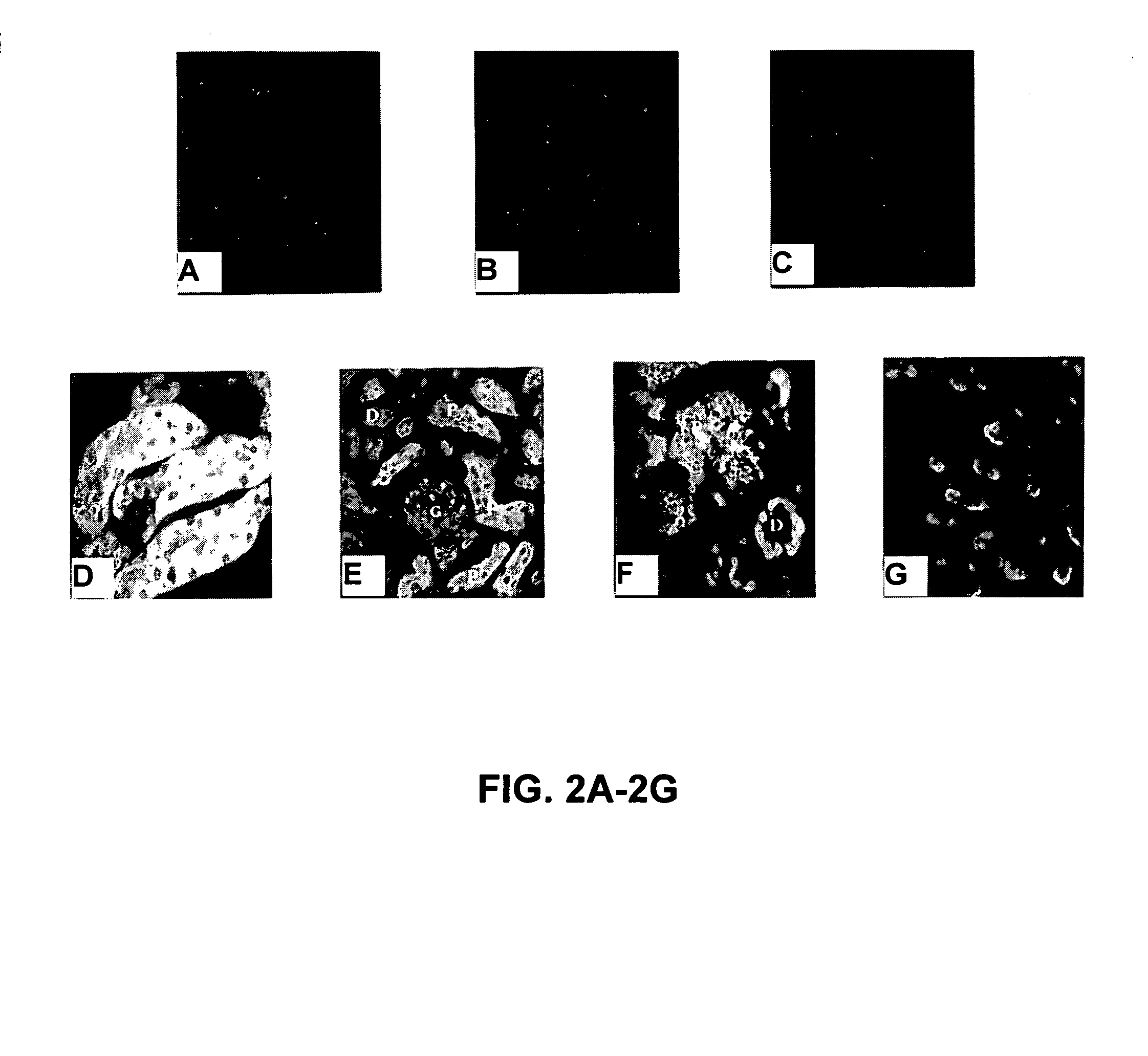Fluorescent in situ RT-PCR
- Summary
- Abstract
- Description
- Claims
- Application Information
AI Technical Summary
Benefits of technology
Problems solved by technology
Method used
Image
Examples
example 1
Materials and Methods
Materials:
[0126]Paraformaldehyde was purchased from Sigma (St. Louis, Mo.). Probe-on plus slides were purchased from Fisher Scientific (Itasca, Ill.). Proteinase K. Tritirachium Albium was purchased from Amresco (Solon, Ohio). RNase-free DNase I and Biotin-16-dUTP were purchased from Boehringer Mannheim (Indianapolis, Ind.). RQI-DNase, RNAsin, dNTPS and restriction enzymes were purchased from Promega Scientific Co. (Madison, Wis.). Cy-5 conjugated streptavidin was purchased from Jackson ImmunoResearch Labs (West Grove, Pa.). Primers were synthesized by Operon Technologies (Alameda, Calif.). Superscript II RT enzyme kit was purchased from Gibco-BRL (Rockville, Md.) and AmpliTaq DNA polymerase was purchased from PE Biosystems (Foster City, Calif.).
Methods:
[0127]Tissue Fixation. Whole embryonic kidneys or adult murine kidney sections were washed in cold RNase-free PBS. Tissues were fixed in 4% paraformaldehyde-sucrose at 4° C. for 18 hours. Fixed tissues were mount...
example 2
Krtk, an Alternatively Spliced Tyro 3 Isoform is Preferentially Expressed in Proximal Tubules
[0134]Genes responsible for the development and functional diversity of tubular epithelia along the nephron have not been identified. Differential display PCR was employed to identify genes that are differentially expressed in proximal versus distal tubule cells. Mouse S1 (proximal tubule) and DCT (distal tubule) cell mRNA, was the source mRNA used in differential display PCR. Sequence analysis of a differentially displayed band (334 bp) derived from S1 cells identified the fragment as krtk.
[0135]Blast search revealed significant homology to murine tyro 3, belonging to the Axl / Ufo family. Tyro3 is predominantly expressed in adult brain and is an imporimprove RT-PCRant differentiation factor involved in cell adhesion. Krtk (tyro 3) message was detected by RT-In situ PCR in S-shaped bodies and our results demonstrate that Krtk expression is a late developmental event in proximal tubule formati...
PUM
| Property | Measurement | Unit |
|---|---|---|
| Mass | aaaaa | aaaaa |
| Mass | aaaaa | aaaaa |
| Nanoscale particle size | aaaaa | aaaaa |
Abstract
Description
Claims
Application Information
 Login to View More
Login to View More - R&D
- Intellectual Property
- Life Sciences
- Materials
- Tech Scout
- Unparalleled Data Quality
- Higher Quality Content
- 60% Fewer Hallucinations
Browse by: Latest US Patents, China's latest patents, Technical Efficacy Thesaurus, Application Domain, Technology Topic, Popular Technical Reports.
© 2025 PatSnap. All rights reserved.Legal|Privacy policy|Modern Slavery Act Transparency Statement|Sitemap|About US| Contact US: help@patsnap.com


